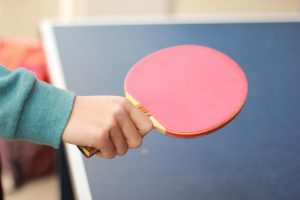Going Clubbing: Table Tennis
December 17, 2015
El Estoque: Why did you join?
Ben Pribe: I’m not actually that good at table tennis but I just come over here to have fun … I started [coming to the club] at the beginning of the last year because my friend, [sophomore] Spencer [Zou], is an officer in the Table Tennis Club.
EE: How do you hold the paddle?
Jimmy Li: There’s two ways you can hold the paddle:
There’s the American-style which looks like you were going to handshake somebody or [hold] a tennis racket (officially called the shakehand grip). [1] The second style is the Asian way or the Chinese way and that’s more traditional. That’s where you have your thumb and your pointer finger over the handle. [2]
EE:What do you do during meetings?
JL: The first thing we do is set up the table and then after the table is set up, we start playing games. Everyone has a lot of fun and we all take turns playing different matches and eating lunch together.
EE: What are the procedures for new and inexperienced members?
JL: If we do have newcomers who haven’t played before, we go through a quick tutorial about how you hold the handle [of the paddle] and [go through] the rules of the game, like how many bounces you can have on each side.
EE: How does a rally start and end?
JL: One of the players serves the ball and [the ball] must land on his or her side and then land on the other side and then the other player returns the ball by only hitting the side farther away from them. [The match] goes on until the ball hits the net, doesn’t go over the net, or doesn’t bounce on the table.
EE: What does a rally typically look like?
EE: Who can join the club?
JL: Anybody at any skill level is welcome to join, but we do have a different array of skill levels from people who are just learning how to play to people who have actually taken classes. Usually we pair up the people who are better with the better people and the beginners with the beginners.
Co-reported/written by Tyler Lin


















